When you make a target missile attack, you also need to plan the time well in NEBULOUS Fleet Command. So how should you plan? Check out our NEBULOUS Fleet Command Easy Time on Target Missiles guide for tips and tricks on how to plan the time correctly in a missile attack.
This is the guide jordenxue it was created by. You can find the author’s link at the end of the guide.
NEBULOUS Fleet Command Easy Time on Target Missiles
This NEBULOUS Fleet Command Easy Time on Target Missiles guide aims to shared tips and tricks that help players to plan time on target missile strike without much efforts.
What is Time on Target Missile Strike, and why is this Useful?
Time on target, aka (TOT), primarily refers to let multiple types and salvos of missiles to arrive at the target at approximately the same time.
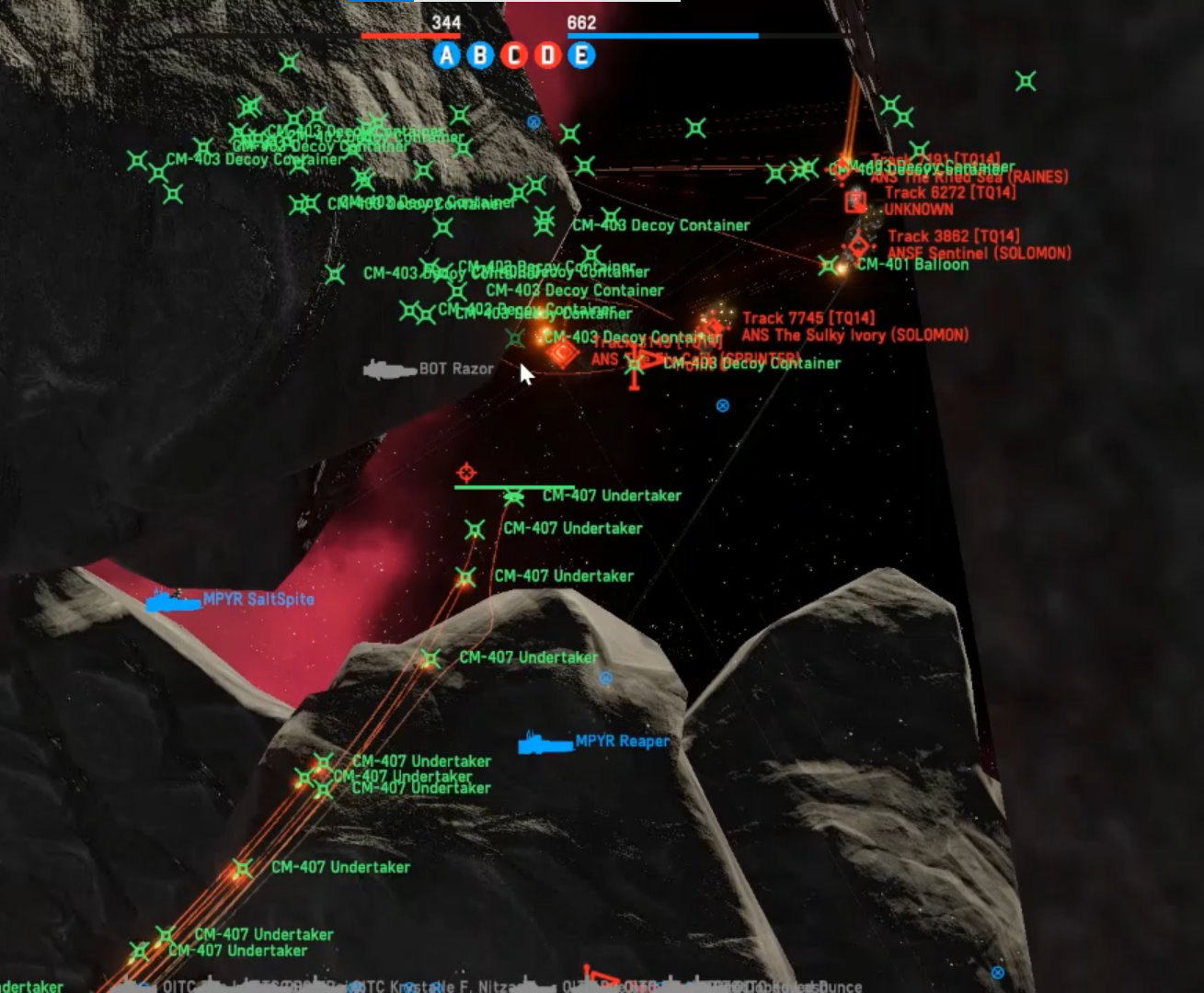
There are mainly Four reasons to plan tot missile strikes on targets.
First, being able to spam a lot of missiles on the target, with limited missile programming bus. And thus we can overwhelm the pd threshold of target fleet with sheer number of missiles, or use some missiles to cover the others, etc.
Second, to strike the target fleet from multiple angles and directions, limiting evasive maneuvers and rock pd maneuvers, and making our strikes harder to jam since they come from multiple directions.
Third, being able to let two different type of missiles to hit the same target, (e.g. s3h and s3 ToT), making use of the different characteristics within one missile strike. For example, to hard kill s3h we need laser pd, defender and anti missile-missiles. To hard kill s3 torpedoes we need a lot of defenders and lots of flak. It is very difficult to equip a fleet with that much of pd, which makes this strategy useful.
Forth, to hit the capital ships with a massive amount of missiles, thoroughly destroy their components, remaining restores and DC capabilities. Thus we put them out of action once and forever.
Fifth, create massive emotional damage to your poor target 😛
Two Types on ToT Planning
Type one Tot refers to tot strike where all the missiles within different salvos shares roughly the same maneuverability. And in most case this means the exact same type of missiles. But some missiles like s2 and s2h actually have similar Tot on most ranges. We will talk about this later.
Type two Tot refers to tot strike with different missiles. For example, s3 and s3h Tot, or s2 and containers Tot, etc.
Type 3: talk to your buddy teammates and plan a tot strike
Note it is possible to use all both type of Tot strike at the same time.
Two ways Planning Type 1 Tot
Again, here, we are planning more than one salvos of missiles with similar maneuverability so the only way to do it is let different salvos travels different time in the air before they arrive at the target.
There are mainly two different ways to plan this.
First one is traditional and more experience based: just simple plan several different routs for your salvos, and the time difference between the routes = your missile programming time.
https://upload.wikimedia.org/wikipedia/commons/e/e3/MRSI_animation_SMIL.svg
The second one is easier: the tot planning via pre-experimented and determined pattern of way points.
Method 1 of Type 1 Tot
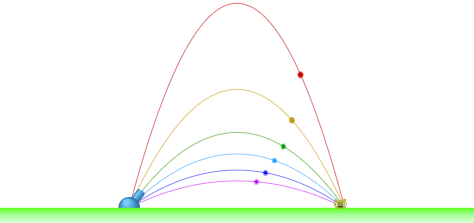
This methods is simply to plan several routes and lets the salvos arrive at the target at the same time, with the help of in game time estimator of way point missiles.
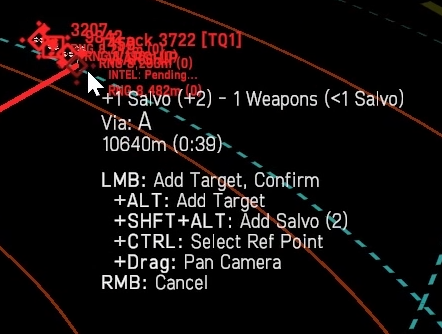
Say we first launch a salvo, salvo 1, which takes T1 second to hit the targets, then we launch salvo 2 which takes T2 second to hit the targets. T1 – T2 should be approximately equal to the actual programming time of your salvos.
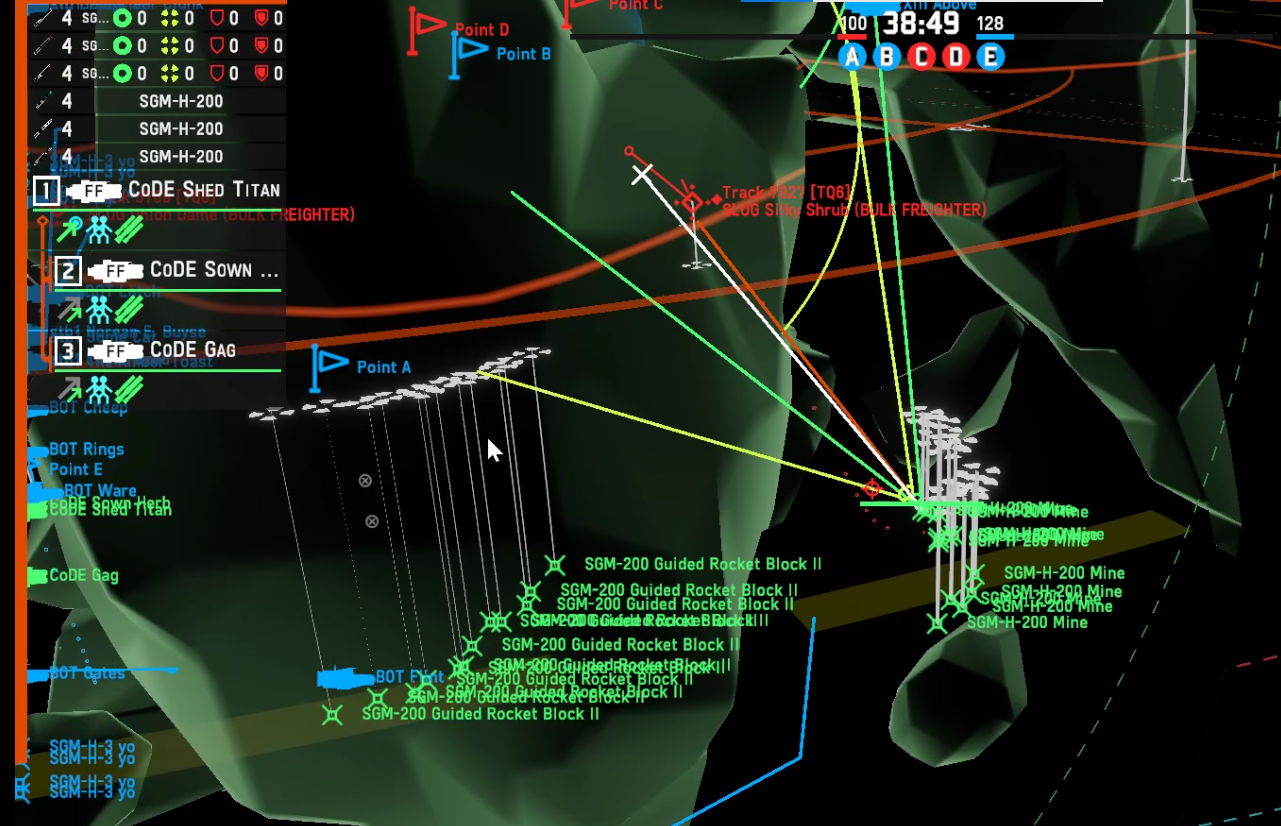
So, your missiles programming time is a very important parameter you need to calculate and remember if you want to plan this. It is equal to the original programming time of missiles / missile programming speed.
For example, If we have 135% of missiles programming speed, and the missiles takes 20s to program (which is a contaienr), the actual programming time will be 20s / 1.35 = 14.8 seconds. And this is the difference between the routes of your tot salvos.
Note the ETA (estimated time of arrival) you see when using the way point missiles are just ESTIMATED since the actual trajectory of missiles maybe a little bit different than what you planned.
For example, in the picture below, the red lines are the way points I set, the yellow line is the actual trajectory of missiles. Best advise: TRY to avoid sharp turn on the way points, and let the distance between the last way points longer.
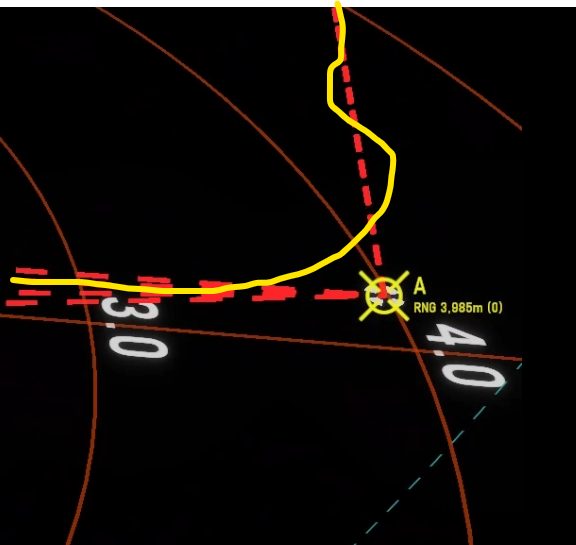
Method 2 of Type 1 Tot
This one is to plan Tot strike via pre-experimented and pre-determined way point pattern so that you don’t need to think or plan too much in the game.
Basically what we need to do is to launch salvos, let them perform some maneuver in the air, and wait for later launched salvo to catch up.
Note most of the missiles can do it, not just containers. So here we use s3h as another example. Their cruise phase maneuverability is in the image below.
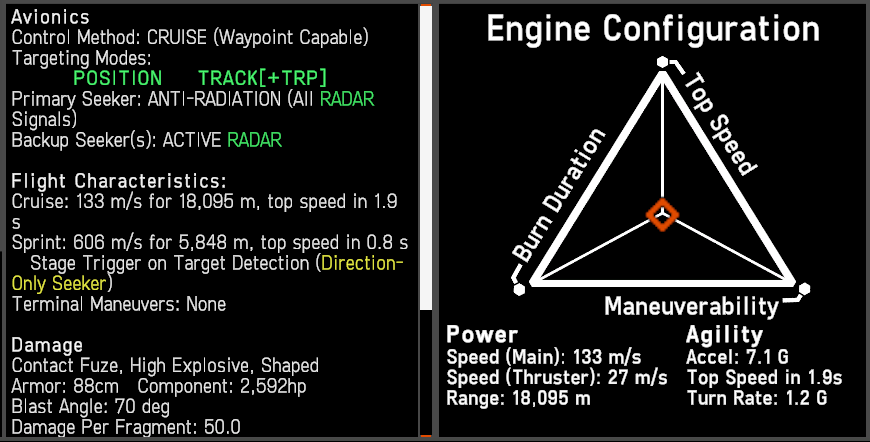
And the video below shows the result:
Here in this video, I first planned a 3 salvo s3h type 1 tot with method 2, and then i planned a type 2 s2 tot. We will take about type 2 later. The pattern i use is simple: let s3h weave and spin and wait for the later salvo to catch up.
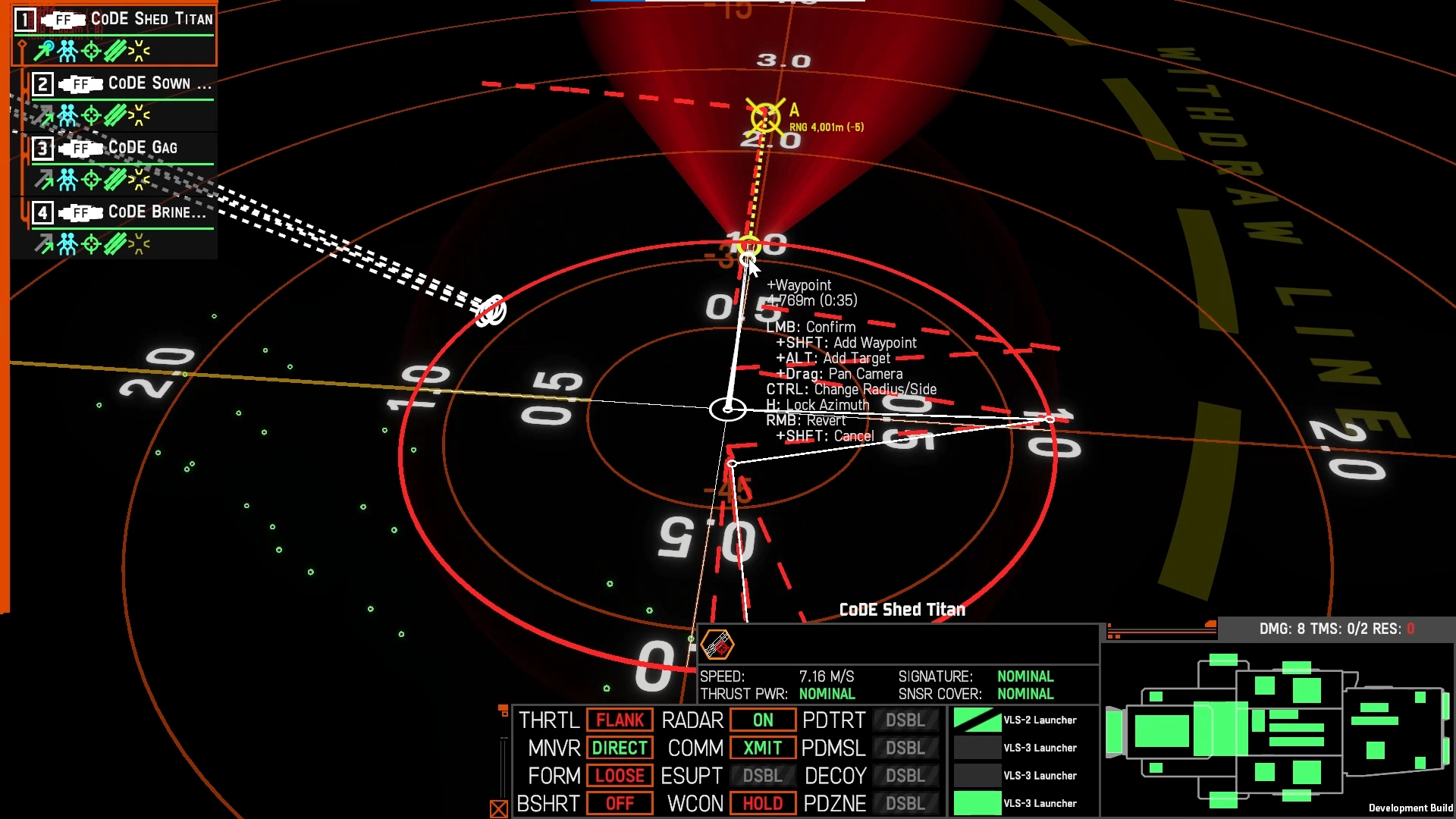
In the image above, the red lines shows the way point of the first salvo, white lines shows that of the second one. Third salvo is just a direct trp( target reference point) fire to the target.
Note the way point I set for the second salvo is simple: an almost 90 degree turn, and then get back to the route where the third salvo will go. The distance between those turning way points are roughly 1.1km. And the way point for the first salvo, is simply doing the exact same thing twice. Since this turn and back pattern takes exactly the time i need to program a s3h, with the buff of a missile parallel interface.
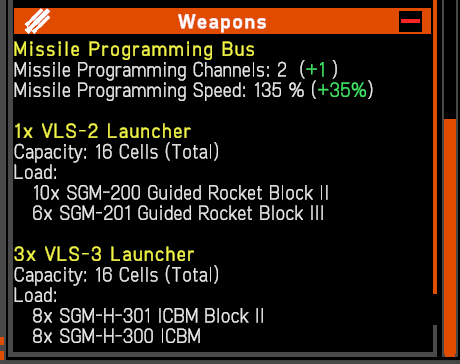
And this is the core idea of method 2: Player can do as many salvos of tot strikes as they their missiles can (because the limitation of range) when they know the pattern which consume the exact same time they program that missile.
And after that, for X salvos of tot, the first salvo you launch just do X-1 times of that pattern, second salvo just do X-2 times, etc, and the Xth salvo just directly launch towards the target.
Note before you do it in the game, probably figure out that pattern first in the testing range.
And in addition, everyone can find their own pattern. For example, another pattern is just launch your earlier salvos to the opposite direction where you last salvo goes, and get back to the real direction half-way. The amount of time this back and forth waste = missile programming time.
Note here the launch ship is stationary. When it moves, you just need to do a little adjustment to your patterns.
Finally, for the last salvo, its totally up to you whether you trp your missiles to the target, or way point it to the target, as long as they hit the target at roughly the same time.
Note for Type 1 Tot
Type 1 Tot is a heavy big punch on the target which takes a relatively longer time to plan and to launch. And thus we first need to be quick and planning and we need to predict where the target will be while we are planning.
For example, for a 3 salvo method 2 container Tot, my sequence is: plan salvo 1, weapon ctrl -> hold fire, plan salvo 2, weapon ctrl release, and during the launch, plan the third salvo.
(This chapter aims to give players some tips or tricks to make tot easier, will keep updating it)
ToT Planning with Different Types of Missiles
This one is pretty similar to type 1 method 1, use the ETA estimator and remember your missile programming time. Launch slower missile first, wait for the right timing, and launch fast missile afterwords.
Mixed Types and Methods on Tot planning
And yes, you can perform mixed types of tot and mix methods of tot. For example, in the previous video I planned a tot including 3 salvo of s3h and 1 salvo of s2. S3h is launched first since they move slower (that s2 got like 270 m/s of speed).
Another example is launching containers with both method 1 and method 2.
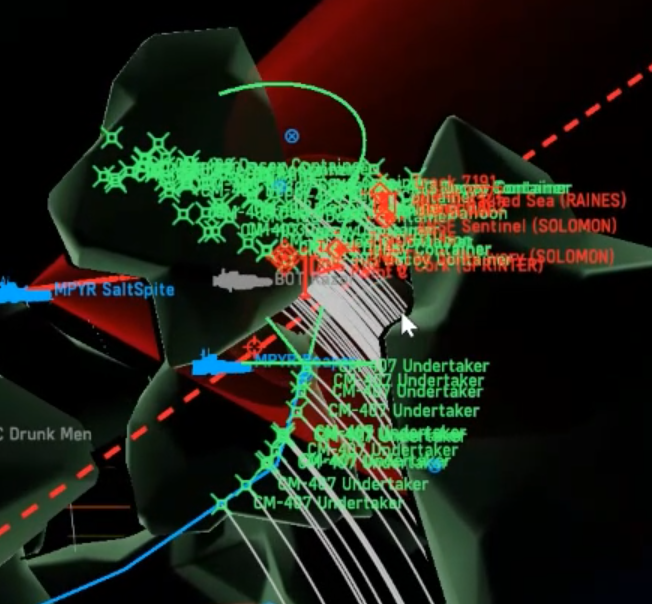
In the picture above, upper cluster is 3 salvo of 12 containers, and the lower salvo is another 12 containers salvo. Upper cluster launch first, through a longer route, bottom salvo launch later, through a shortcut.
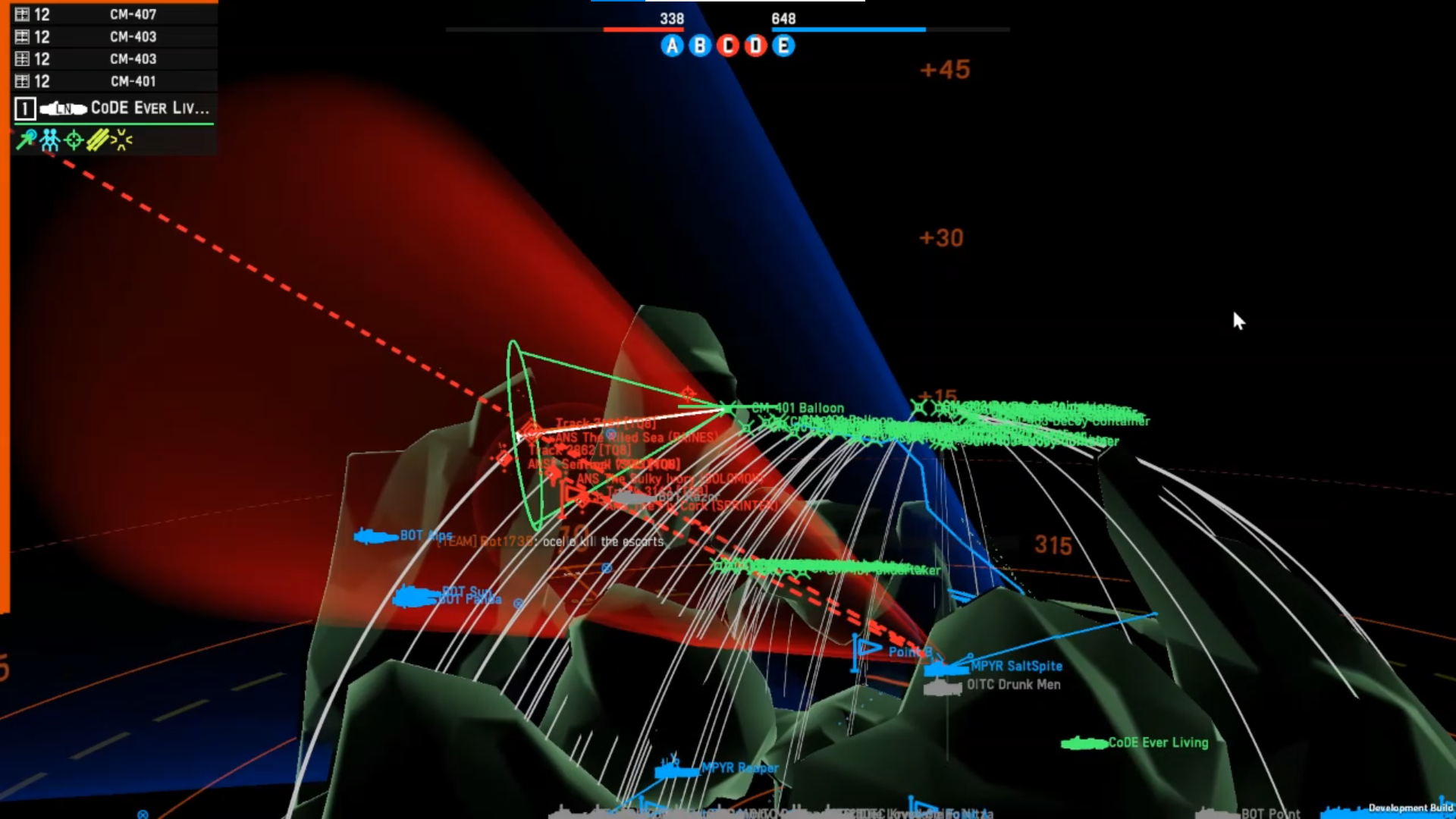
Combined BB fleets reversing to use the rock pd (let decoys and rocks hit the rock), while using pd man to shoot down the containers (which you can’t do it now)
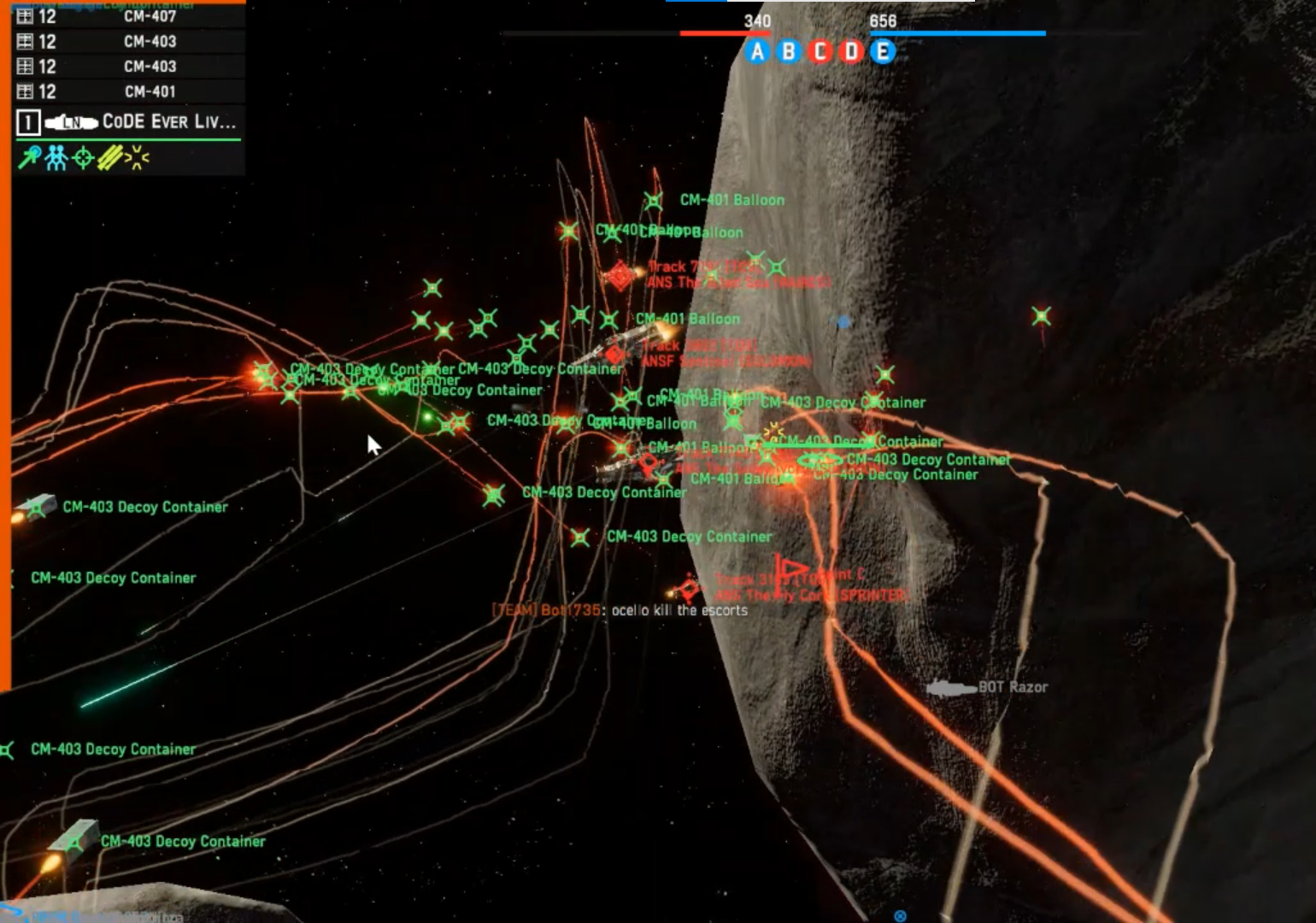
But 48 containers from 2 directions hit the target regardless
Fun facts, off-topic, and thoughts
The first time i feel the need of planning tot is during when manual pd is viral. At that time, all decoy missiles are basically useless, especially the containers. So I though, what if we spam 50 containers to target at the same time? I don’t think most people and manual target to that much of a big cluster.
And yes I was right.
I started with type 1 method 1 tot with container liners, but found it pretty had to plan, especially many targets are high time-sensitive. So I tried for a long time, to figure out a simple way to plan tot. And there comes type 1 method 2 and the others.
In fact type 1 method 2 have 2 different versions, the current one is the simplification of previous one. Which, i hope, can enable fairly new players to start playing tot.
Anyway, I will keep posting some thoughts about tot in this chapter later.
